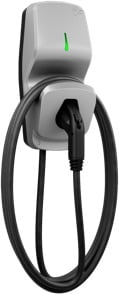If you were in high school in the 80s you wore neon or Vans, you listened Depeche Mode or Prince, you watched John Hughes movies and you wanted to drive either a bug or a Golf. I did anyway. What I did drive was my first car, the Chevette. You probably did too.
Flashforward 30 years and those who know me know that my wardrobe (and hair) look pretty much the same. My all-time favourite albums are still made by Depeche Mode and Prince and I’ve been introducing my daughter, now in high school, to John Hughes. And the car I want to drive is still the VW Golf.
Like me, the Golf has grown up and we’re thinking about a lot of the same things. I imagine that the team over there has teenagers in their homes (and cars) too. So my next new car is influenced by my daughter and the first letter of that car will be ‘e’ – not for ‘Eric’, but for ‘electric’. Hannah would point out that it is also for ‘eco’.
So, the 2018 Volkswagen e-Golf has my attention and checks off all the boxes.
The e-Golf is the first 100% electric Volkswagen in Canada. As I always wanted the black Golf, I’m still going to get the black one, but maybe you’re a fiery red kind of person. Maybe you’d prefer a cool blue hue. No matter what your colour preference, the e-Golf has you covered with 40 standard and custom colours to choose from.
And charging the e-Golf is becoming easier and faster every day. You can charge it from the comfort of your home with a sturdy and reliable FLO Home charging stations, all made with quality Canadian parts.
With 214 lb-ft of thrilling, instantaneous torque that helps you take you from 0 to 100 km/h in just 9.6 seconds, powerful performance is always available at the push of a pedal, or when Prince starts to sing “Let’s Go Crazy…”
And now, this is where the e in e-Golf comes in: Let’s begin with the e-Golf’s lithium-ion battery capacity. A full charge will use approximately 31.5 kWh of electricity. Keep in mind, the battery will never fully deplete, so you’ll never actually have to use that much electricity to get a full charge.
In terms of consumption, the battery uses approximately 17.4 kWh for every 100 kilometers driven. This is the gasoline equivalent of only 2.0 L/100 km! So, if you drive 100 km per day, on average, you’ll have to charge the battery approximately every 1.8 days.
Electric vehicles feature motor efficiency of up to 96%, quiet operation, and zero harmful emissions or greenhouse gases while driving – and they require minimal additional maintenance. Even though the technology is advanced, you’ll find owning an electric vehicle is simple.
Just like putting on a pair of jeans, turning on that John Hughes movie, and go back to the future.





